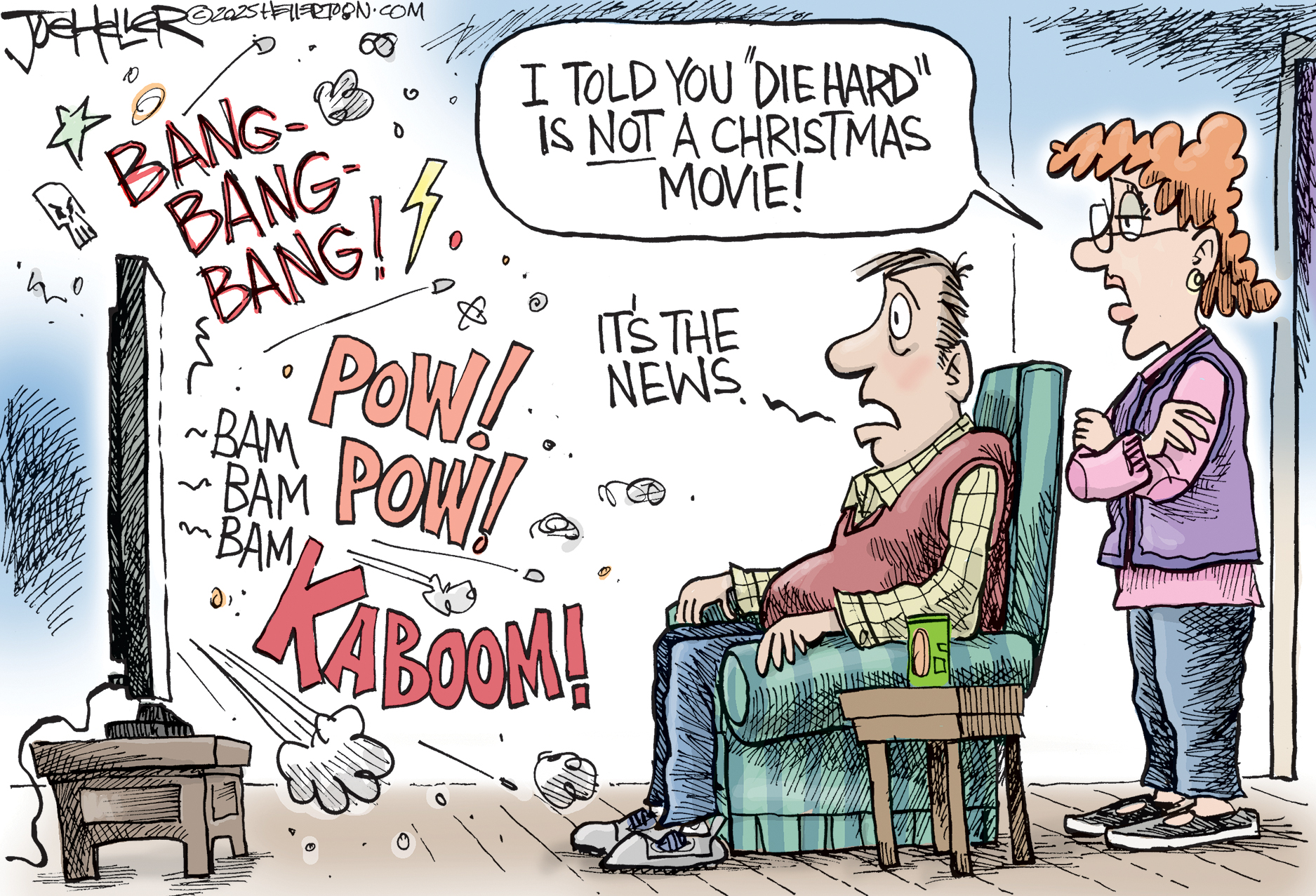The new—and improved?—SAT
For several generations, the SAT has been a crucial yardstick by which colleges measure high school seniors clamoring for admission. This year’s SAT, though, will be dramatically different. Why was the test changed?
Is the new test easier or harder?
It’s not supposed to be either. It’s supposed to be more relevant. The College Board, which administers the test, promises that it’ll do a better job of sorting out who will succeed in college. For many students, the good news is that the verbal section no longer contains the widely feared analogies (“gas” is to “car” as “food” is to blank). That section, renamed “critical reading,” will now consist mostly of questions that will test students’ ability to interpret passages of text. But the price of deleting the analogies is that the new test is longer—three parts instead of two—and will take 45 minutes more to complete.
What are the other sections?
The Week
Escape your echo chamber. Get the facts behind the news, plus analysis from multiple perspectives.

Sign up for The Week's Free Newsletters
From our morning news briefing to a weekly Good News Newsletter, get the best of The Week delivered directly to your inbox.
From our morning news briefing to a weekly Good News Newsletter, get the best of The Week delivered directly to your inbox.
A new writing section will require students to compose a brief essay and sweat through a battery of multiple-choice grammar and sentence-completion questions. The math section will be largely the same, but will, for the first time, have some problems requiring knowledge of advanced algebra. The grading is different, too: A perfect score is now 2400, up from the old 1600.
What’s the point of these changes?
They’re the culmination of decades of fierce debate. The SAT has been widely used by colleges since shortly after World War II, when returning GIs began applying in huge numbers. Admissions officers found they needed a standardized test to help cut through stacks of applications. They settled on the Scholastic Aptitude Test, originally created by a Princeton psychologist named Carl Brigham, as an IQ test for the Army. Tens of millions of students took the SAT through the 1950s and 1960s, and it became a rite of passage for ambitious teens. But by the 1970s, a backlash had set in.
What were the complaints?
A free daily email with the biggest news stories of the day – and the best features from TheWeek.com
Critics charged that the test remained, in essence, an IQ test largely divorced from high school curricula and real-world learning skills. Some also contended that the SAT was inherently unfair to minority students, who consistently scored lower than whites. “It’s just pregnant with cultural connotations about what intelligence is, who is smart, who is capable,” says Peter Sacks, author of Standardized Minds: The High Price of America’s Testing Culture. Educators found that some students with great SAT scores floundered in college, while others with mediocre results thrived. In 1994, the College Board responded by declaring that “SAT” would simply be a generic name and no longer stand for “Scholastic Aptitude Test.” That might have been the extent of the changes, if not for a fellow named Richard Atkinson.
Who’s he?
Atkinson is the president of the University of California and a leading cognitive psychologist. In 1999, he sat down to take the SAT and found most of it irrelevant. “What the hell are these analogies?” he asked. He grew more outraged when he discovered that many high school students from affluent families were taking expensive SAT classes, where they were coached on analogies and other specific test content. “The SATs have acquired a mystique that’s clearly not warranted,” Atkinson declared. “Who knows what they measure?” In February 2001, he recommended that his university’s nine campuses no longer require that applicants submit SAT scores.
What was the reaction?
Those who regarded the SAT as a crude measuring stick were gleeful. But it was terrible news for the College Board, a private organization administering the test for 4,700 colleges and universities. Of the 2.2 million teenagers who take the SAT annually, 76,000 apply to the University of California—the College Board’s largest single customer. If they no longer took the test, the Board would lose more than $2 million of the $141 million it takes in every year from test fees. “When the president of the University of California speaks up,” admitted College Board head Gaston Caperton, “the College Board listens.” So to satisfy Atkinson, and other administrators who were cheering him on, the SAT was retooled to more closely reflect what students are actually learning in school.
How is the new test being received?
With considerable trepidation. The biggest worries concern the written essays, which can’t be graded by computer. Some 3,000 human scorers will do the job, ranking students’ writing on a scale of 1 to 6. Their judgments, of course, will inevitably be criticized for subjectivity. Colleges are unsure how much weight to give the new scores, especially on the essay section, since they have no prior experience with them. And so many students are alarmed at the prospect of taking the new test that 430,000—60,000 more than usual—signed up for the old version when it was offered for the last time, in January. (The new test debuts in March.) But even when the transition is over, the SAT’s problems aren’t likely to end.
Why not?
Colleges are growing increasingly skeptical of standardized tests, however they’re designed. About 280 colleges and universities across the country have already dropped the SAT as an application requirement; among them are such small, prestigious schools as Bowdoin, Mount Holyoke, Union, Dickinson, and Franklin and Marshall. Many other colleges are giving the test much less weight, as they look for students with leadership skills, quirky talents, and other intangibles. With SAT coaching now a $400 million–a-year industry, some critics say the test has become an end in itself, measuring nothing but the ability to take the SAT. “I worry most that it takes away from what students actually should be doing,” says Willard Dix, a high school counselor in Chicago. “Which is homework.”
How the famous fared
If you don’t remember how you did on the SAT, or would prefer to forget, you’re not alone. When asked what she got on her SAT, Jennifer Lopez replied, “Nail polish.” John Kerry has refused to release his SAT scores; so has Oprah Winfrey, one of the most successful women in the country. Here are a few SATs of some well-known Americans, based on their own recollections or press inquiries. By way of perspective, remember that a perfect score is 1600, and that last year’s average score was 1026.
George W. Bush: 1206 (566 on the verbal)Al Gore: 1335Sen. Bill Bradley: 485 verbalBill Cosby: High 400s combinedAuthor Stephen King: 1300sAuthor Amy Tan: 1100sTV personality Meredith Vieira: 1300sSun Microsystems CEO Scott McNealy: 1420Bill Gates: 1590Microsoft co-founder Paul Allen: 1600
-
 The small Caribbean island courting crypto billions
The small Caribbean island courting crypto billionsUnder the Radar Crypto mogul Olivier Janssens plans to create a libertarian utopia on Nevis
-
 Political cartoons for December 21
Political cartoons for December 21Cartoons Sunday’s political cartoons include Christmas movies, AI sermons, and more
-
 A luxury walking tour in Western Australia
A luxury walking tour in Western AustraliaThe Week Recommends Walk through an ‘ancient forest’ and listen to the ‘gentle hushing’ of the upper canopy